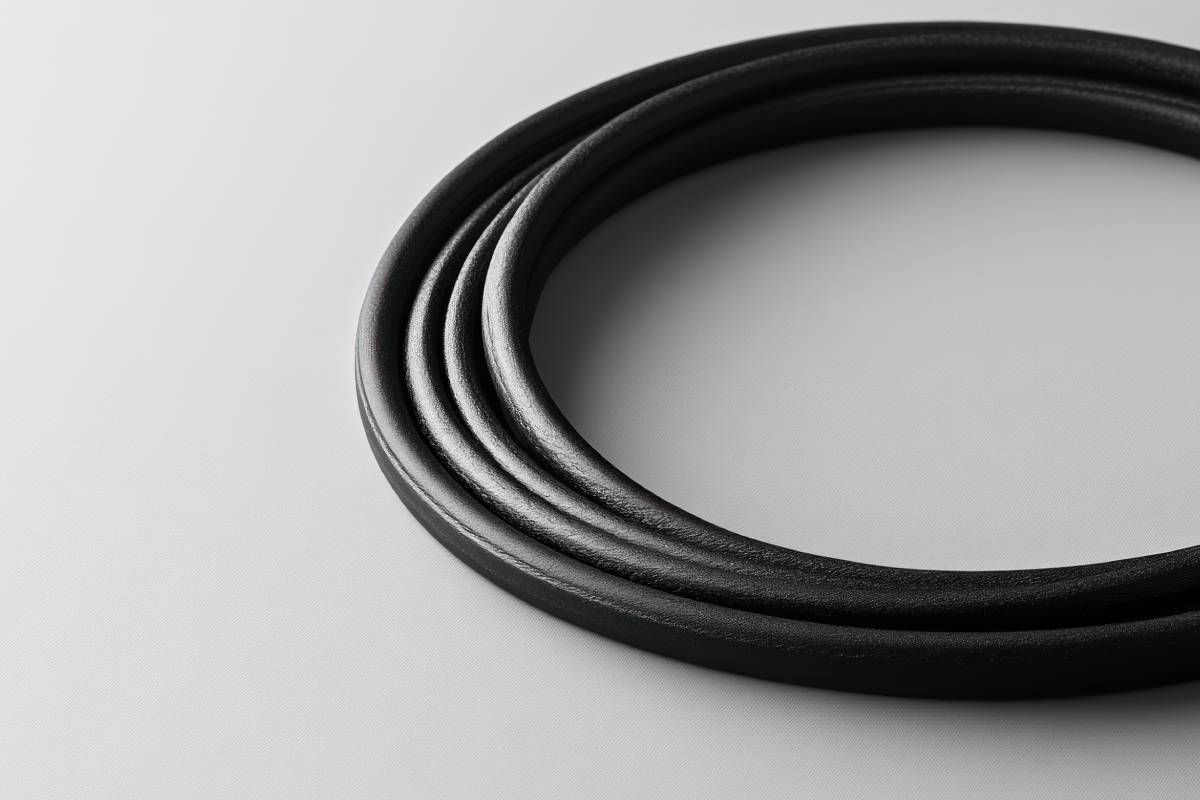
10 Jun D-Rings vs. O-Rings: What’s The Difference?
If you’ve ever wondered how machines keep liquids and gases from leaking out, the answer is small rubber parts called seals. Two of the most common types are D-rings and O-rings. Even though the names certainly sound similar, they work quite differently.
The I.B. Moore Manufacturing team members are closely familiar with the distinctions between these sealing components and know how they impact industrial applications. In essence, each ring’s unique properties make it suitable for specific applications. Both seals work effectively, but their performance capabilities set them apart.
D-Rings vs. O-Rings: Shape and Construction Fundamentals
The most obvious difference lies in their cross-sectional profiles; both resemble alphabet letters. O-rings have a circular construction, while D-rings have a flat side and a curved surface.
This apparent variation affects how each ring functions during installation and operation. O-rings maintain a consistent thickness all around for uniform pressure distribution against sealing surfaces. The D-ring’s flat base offers increased contact area with one sealing surface while using the curved portion for dynamic sealing action.
D-Rings vs. O-Rings: Installation and Groove Requirements
Grooves are carved-out channels where seals sit, like tracks holding rubber rings in place. Since O-rings are round, they need symmetrical grooves—-the same shape all around. The groove depth must match the O-ring’s size for proper compression and sealing.
D-rings need asymmetrical grooves. The flat bottom sits securely in the groove’s flat base, preventing rolling or shifting under pressure. This stability makes D-rings better for high-pressure applications where movement could break the seal.
D-Rings vs. O-Rings: Pressure Performance Characteristics
Both sealing rings effectively handle pressure applications, but the response patterns differ. O-rings evenly distribute pressure forces around their entire circumference, so they’re ideal for moderate to high-pressure applications requiring uniform stress distribution.
D-rings excel in high-pressure environments due to their flat base design. The flat part resists extrusion into clearance gaps better than round profiles, so we prefer D-rings for applications exceeding standard pressure limits.
D-Rings vs. O-Rings: Dynamic and Static Applications
Application type also influences ring selection. O-rings perform well in both static and dynamic applications. Their round profile provides consistent sealing action during relative motion between surfaces, and their uniform shape enhances sealing integrity when components move or rotate.
D-rings primarily serve static sealing applications where components remain stationary relative to each other. The flat base prevents rolling or twisting that could occur in dynamic applications for consistent sealing performance throughout the component’s service life.
Industrial Applications and Use Cases
As a D-ring distributor and an O-ring distributor, I.B. Moore Manufacturing sees these seals used in many applications.
O-rings commonly seal hydraulic cylinders, pneumatic systems, and rotating shaft assemblies. Their versatility makes them standard automotive, aerospace, and general manufacturing equipment components.
D-rings are used in flange connections, static joint assemblies, and high-pressure containment systems. We order them for our oil and gas, chemical processing, and heavy machinery clients. Their superior pressure resistance and stability characteristics work beautifully in these applications.
Material Considerations and Selection
Manufacturers create both ring types with elastomer materials, such as nitrile, silicone, fluorocarbon, and EPDM compounds. Industrial sheet rubber materials frequently serve as the base compounds for both ring types, with formulations tailored to client requirements.
Material selection depends on operating temperature, chemical compatibility, and pressure requirements—it’s not only about the shape.
Working with an experienced D-ring or O-ring distributor like I.B. Moore Manufacturing means the proper material specification for every application.
Cost and Availability Factors
Due to their widespread use across industries, O-rings typically offer lower cost and broader availability. Standard sizes are readily available from suppliers, making replacement convenient and economical.
Since they have more specialized applications, D-rings may require custom sizing or longer lead times. However, their superior performance in specific applications often justifies any additional cost or sourcing complexity.
As you have seen, though, cost isn’t the only consideration here. Our experts can walk you through the options and help you select the best custom sealing solutions for your applications.
Need a D-ring or an O-ring Distributor? I.B. Moore Offers Quality Sealing Solutions
I.B. Moore Manufacturing provides industry-leading guidance and top-quality sealing components for your applications. Our technical team helps clients choose between D-rings and O-rings based on their specific requirements for reliable performance and durability. Contact us in Lexington, KY, to request a quote and ask about nationwide service.
